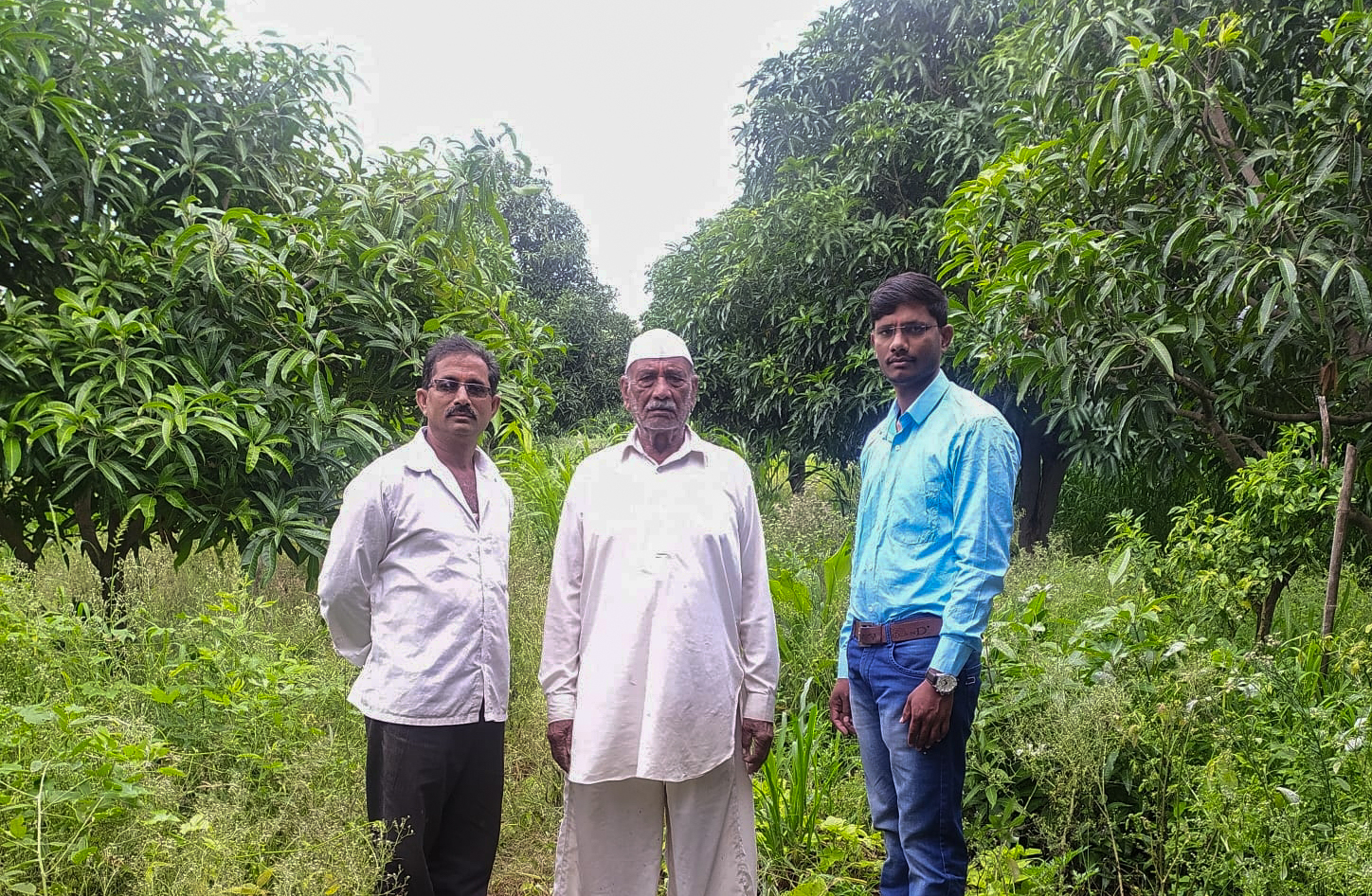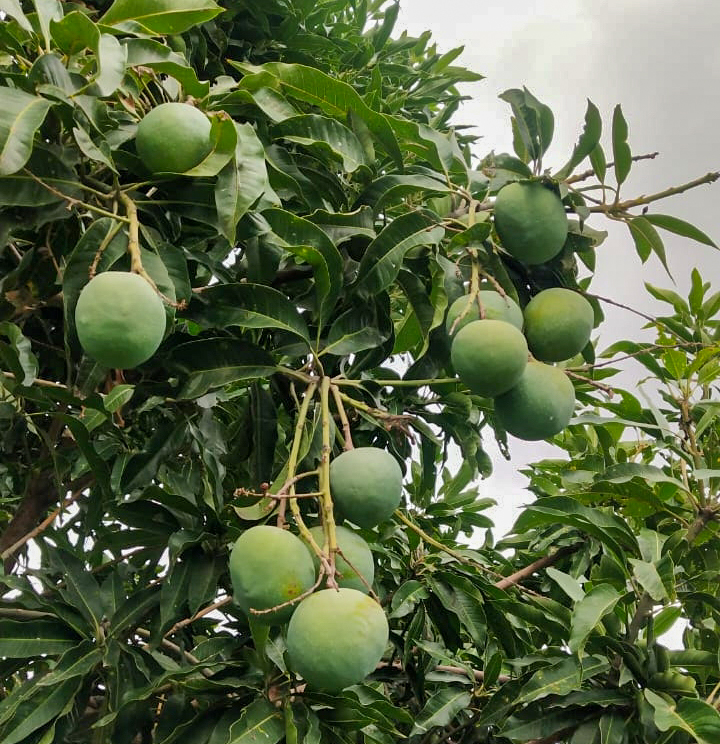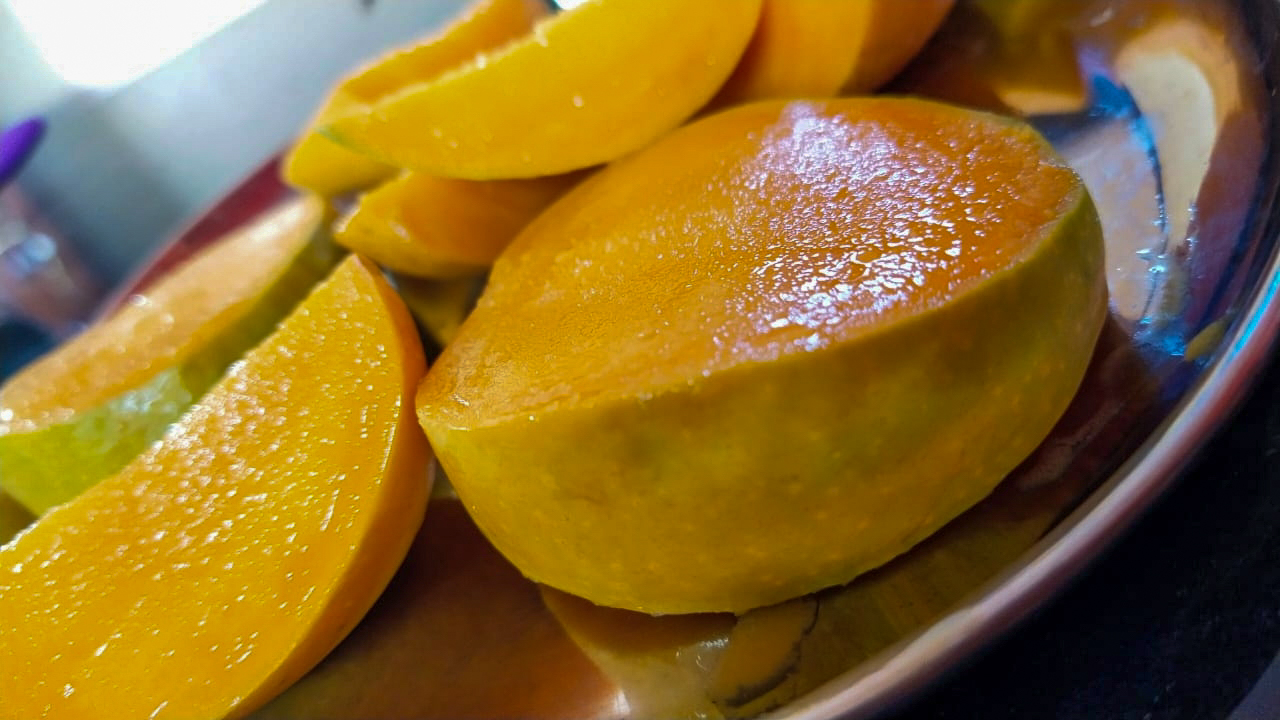Ever since word spread that Shamkant Thange has successfully revived a once-popular mango variety in his two-acre orchard in Tikhol village in Ahmednagar Maharashtra, he has been receiving a stream of visitors including farmers from far off Sindhudurg.
Swamped by hundreds of orders for the saplings of mango, locally known as ‘Tikhliya’, the 52-year-old assures prospective buyers saying, “I will be able to offer it by early next year.”
A small village with 2,000 plus inhabitants, Tikhol sits in a valley circled by the Sahyadri range. Barely 3 km from National Highway 61, the village of farmers is home to an earthen dam, which caters to drinking water and is also used for irrigating crops like bajra, sweet pea, onion, tomato, sugarcane and beans. The village also borders the famed Ralegan Siddhi, considered to be a model of environmental conservation.

According to the villagers, the Tikhliya mango trees have stood on the edge of the village since the British era but stopped yielding fruits in the early ’90s. There are two theories about how it got its name: first, because it belonged to Tikhol village and second, because of its light green dots (tikki in Marathi) on the fruit’s body. In Maharashtra, mango trees which come up beside water bodies, like a river or a pond are known as Raiwal or gavran amba (local mango variety). Tikhliya is also a raiwal variety.
Old timers here tell you that the mango variety has had a special place in the heart of Tikhol and its neighbouring villages. Till about the 1970s, after harvest, bullock carts laden with ripe Tikhliya were taken in a procession with a brass band playing till the village’s border. However, the practice was discontinued in the early ’70s. “We took the mangoes loaded in bullock carts to the Nagar (Ahmednagar is colloquially referred as) mandi, which is 40km away. Six bullock carts carried around six quintals each of the fruit,” reminiscences Sakhare Thange (85). He adds, “It took us close to three hours to reach the mandi and we sold a choudah (a pile of 14) for Rs 40.”
As late as 1984, a Tikhol farmer, Rangnath Ganpat Kabre, was awarded a cash prize of Rs 1,000 by the Ahmednagar Zilla Parishad for growing the Tikhliya variety. Now we know why it acquired the moniker, ‘Nagar Cha Hapus’ (Hapus of Ahmednagar), comparable to Konkan’s Alphonso.
However, by the late ’90s, the tree had stopped yielding fruits, which in horticulture is called becoming ‘senile’. Six years into the new millennium it had withered. Then, some time in 2006, Shamkant, whose family had enjoyed it’s fruits, decided to conserve it. “The tree had withered and become lifeless, barring a couple of branches. I brought home a couple of them and made grafts of them which over the years I planted on three gunthas (3000 sq. ft) of land,” says the man who has devoted 15 long years to revive Tikhliya.
The Thange orchard with 200 mango trees stands on 2 acres of land.

Flowering on this tree begins in the December-January period and a 10-year-old tree annually yields between 3 to 5 tonnes of fruits, according to Shamkant.
From the oldest orchard comprising 50 trees, this year, the Thanges harvested 50 quintals and sold it for Rs 150 a kg.
Of the many who consider Tikhliya to be a hidden gem awaiting to be rediscovered is one Vasant Gharat (60), a Panvel resident who trades in fish spawns. He says, “During a business trip to Tikhol I happened to enjoy the mango and ever since then, my family and I have been asking for more of it. What’s remarkable about this mango variety is it’s aroma stays with you. I was so charmed by it that I acquired a couple of saplings and gifted them to a farmer friend.”
There are scores of farmers in Tikhol who grow mangoes, namely Dasheri, Payeri and Kesar but it’s the Thanges who besides growing other crops have helped revive a local variety and propagate it too.
Dwelling on the identifying characteristics of Tikhliya, Devendra Jadhav, Block Technology Manager, ATMA (Agricultural Technology Management Agency) who has been working in Parner taluka since 2016, says, “Tikhliya arrives after all the mango varieties, like Hapus, Kesar, Payeri, etc, have finished their three-month-long reign. Harvested in mid-June it’s much-sought after among the fruit’s dedicated fans.”
Every year a storm characterised by high-speed winds and heavy rains fells the mango crop in large numbers leading to losses to the grower. Interestingly, Tikhiliya is endowed with a unique feature noticed by the villagers. The thick stem on which fruits hang in a bunch protects it from erratic weather conditions.
ATMA has big plans for Tikhliya. Jadhav says, “We will provide all the assistance to the Thanges to develop a nursery and cater to the huge demand for its saplings. We want to make Tikhliya synonymous to Maharashtra which will benefit growers who want to grow off season mango.”

Weighing around 250-300g, the fruit, once plucked, remains fresh for up to 25 days. Slightly rounder in shape, firm-fleshed, fibre-free and endowed with a pleasing aroma, Tikhliya has delicate skin. When ripe the skin becomes yellow. But it lacks the extreme sweetness of Alphonso.
Taking into consideration its unique features, ATMA has filed for GI (Geographical Index) status with the IPR cell of Mahatma Phule Krishi Vidyapeeth, Rahuri.
The family also aspires to enter the variety in the National Database of Mangoes which is maintained by the Department of Biotechnology, Indian Council of Agriculture Research and Central Institute of Subtropical Horticulture. “If the Thanges achieve the status of becoming a custodian farmer like hundreds of others spread across the country who conserve our horticulture heritage,” says Jadhav.
Having tasted few slices of a freshly-cut Tikhliya I tend to agree with what Avinash (28), a third generation Thange and an agriculture graduate, told me: ‘Whatever you write, it would still be inadequate to express the mango’s uniqueness’.”
(Edited by Yoshita Rao)
No comments:
Post a Comment